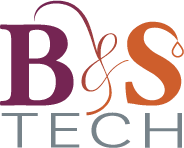The popularity of alcohol-free beers and wines is driving European manufacturers to equip themselves with alcohol-removal technologies.
But what are these technologies?
In order to dealcoholise an alcohol (wine, beer or spirits), 3 techniques are available and effective. Let's have a look today at the rotating cone column:
Appearing 30 years ago, the Spinning Cone Column (SCC) technology was developed by the Australian company Flavourtech. This technology follows the principle of vacuum evaporation, or cold distillation. It is a technology that allows the separation of alcohol and aromas from the product to be dealcoholised (wine, beer or spirits). Distillation allows the separation of liquids with different boiling temperatures. This is the case for alcohol and more volatile compounds such as aromas. Using this process under vacuum makes it possible to reduce the boiling point of alcohol and aromas, allowing them to degrade less than in a classic distillation.
In the case of the Spinning Cone Column (SCC), under the effect of the rotation of the cones, the liquid will be deposited in a thin layer allowing a better evaporation.
The dealcoholisation is done in two stages:
- The first passage allows the recovery of the aromas contained in the initial product.
- The second dealcoholises the liquid.
It is then sufficient to reincorporate the aromas into the dealcoholised liquid.
It is the most flexible vacuum evaporation technology because it can process a wide range of products not only to dealcoholise but also to concentrate or separate, widely used for fruit juices or coffee.
If you are interested in dealcoholisation technologies, do not hesitate to find out more directly on our site, under the heading "dealcoholisation technologies" or to contact us.
